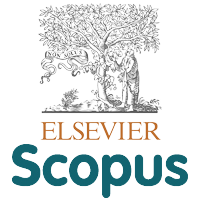Floral Stimulation and Behavior of Insect Pollinators Affected by Pyraclostrobin on Arabica Coffee
Abstract
Keywords
Full Text:
PDFReferences
Barrios, B., Pena, S. R., Salas, A., & Koptur, S. (2016). Butterflies visit more frequently, but bees are better pollinators: The importance of mouthpart dimensions in effective pollen removal and deposition. AoB PLANTS, 8, 1–10. crossref
Boreux, V., Kushalappa, C. G., Vaast, P., & Ghazoul, J. (2013). Interactive effects among ecosystem services and management practices on crop production: Pollination in coffee agroforestry systems. Proceedings of the National Academy of Sciences of the United States of America, 110(21), 8387–8392. crossref
Camargo, R. B., Weber, R., Júnior, W. J., Ono, E. O., & Rodrigues, J. D. (2015). Cytokinin, pyraclostrobin and putrescine: Influence in the development of grape Vitis labrusca cultivar Niagara Rosada. American International Journal of Biology, 3(31), 19–31. crossref
Crespi, B. J., & Yanega, D. (1995). The definition of eusociality. Behavioral Ecology, 6(1), 109–115. crossref
DaMatta, F. M., & Ramalho, J. D. C. (2006). Impacts of drought and temperature stress on coffee physiology and production: A review. Brazilian Journal of Plant Physiology, 18(1), 55–81. crossref
DaMatta, F. M., Ronchi, C. P., Maestri, M., & Barros, R. S. (2007). Ecophysiology of coffee growth and production. Brazilian Journal of Plant Physiology, 19(4), 485–510. crossref
De Stefano, L. A., Stepanov, I. I., & Abramson, C. I. (2014). The first order transfer function in the analysis of agrochemical data in honey bees (Apis mellifera L.): Proboscis extension reflex (PER) studies. Insects, 5(1), 167–198. crossref
FAO. (2015). FAO statictical pocketbook coffee 2015. Rome, IT: FAO. Retrieved from pdf
Gemmill-Herren, B., Allara, M., Koomen, I., van der Valk, H., & Roubik, D. W. (2012). Chapter 1: An agroecosystem approach to protecting pollinators from pesticides. In Pollinator safety in agriculture (pp. 1-14). Retrieved from pdf
Hardiansyah, A. N., Sulistyaningsih, E., & Putra, E. T. S. (2017). Effects of Pyraclostrobin on Growth and Yield of Curly Red Chili (Capsicum annum L.). Ilmu Pertanian (Agricultural Science), 2(1), 009-014. crossref
Hausladen, H., Adolf, B., & Leiminger, J. (2015). Evidence of strobilurine resistant isolates of A. solani and A. alternate in Germany. Paper presented at Fifteenth Euroblight Workshop, PPO – Special Report No. 17, Brasov – Romania, 10-13 May (pp. 93-100). Retrieved from pdf
Kanungo, M., & Joshi, J. (2014). Impact of pyraclostrobin (F-500) on crop plants. Plant Science Today, 1(3), 174–178. crossref
Kimball, S., & Wilson, P. (2009). The Insects That Visit Penstemon Flowers. Bulletin of the American Penstemon Society, 68, 20–28.
Klein, A. M., Steffan-Dewenter, I., & Tscharntke, T. (2003). Bee pollination and fruit set of Coffea Arabica and C. canephora (Rubiaceae). American Journal of Botany, 90(1), 153–157. crossref
Leveau, J. H. J., & Lindow, S. E. (2005). Utilization of the plant hormone indole-3-acetic acid for growth by Pseudomonas putida strain 1290. Applied and Environmental Microbiology, 71(5), 2365–2371. crossref
Mahoney, K. J., Vyn, R. J., & Gillard, C. L. (2015). The effect of pyraclostrobin on soybean plant health, yield, and profitability in Ontario. Canadian Journal of Plant Science, 95(2), 285–292. crossref
Ngo, H. T., Mojica, A. C., & Packer, L. (2011). Coffee plant – pollinator interactions: A review. Canadian Journal of Zoology, 89(8), 647–660. crossref
Pettis, J. S., Lichtenberg, E. M., Andree, M., Stitzinger, J., Rose, R., & VanEngelsdorp, D. (2013). Crop pollination exposes honey bees to pesticides which alters their susceptibility to the gut pathogen Nosema ceranae. PLoS ONE, 8(7), e70182. crossref
SigmaPlot. (2013). What can SigmaPlot do for you? Retrieved from website
Shimizu, A., Dohzono, I., Nakaji, M., Roff, D. A., Miller, D. G., Osato, S., … Yoshimura, J. (2014). Finetuned bee-flower Coevolutionary state hidden within multiple pollination interactions. Scientific Reports, 4, 1–9. crossref
Tarno, H., Qi, H., Yamasaki, M., Kobayashi, M., & Futai, K. (2016). The behavioral role of males of Platypus quercivorus Murayama in their subsocial colonies. Agrivita, 38(1). crossref
DOI: http://doi.org/10.17503/agrivita.v40i1.1719
Copyright (c) 2017 UNIVERSITAS BRAWIJAYA

This work is licensed under a Creative Commons Attribution-NonCommercial 4.0 International License.








